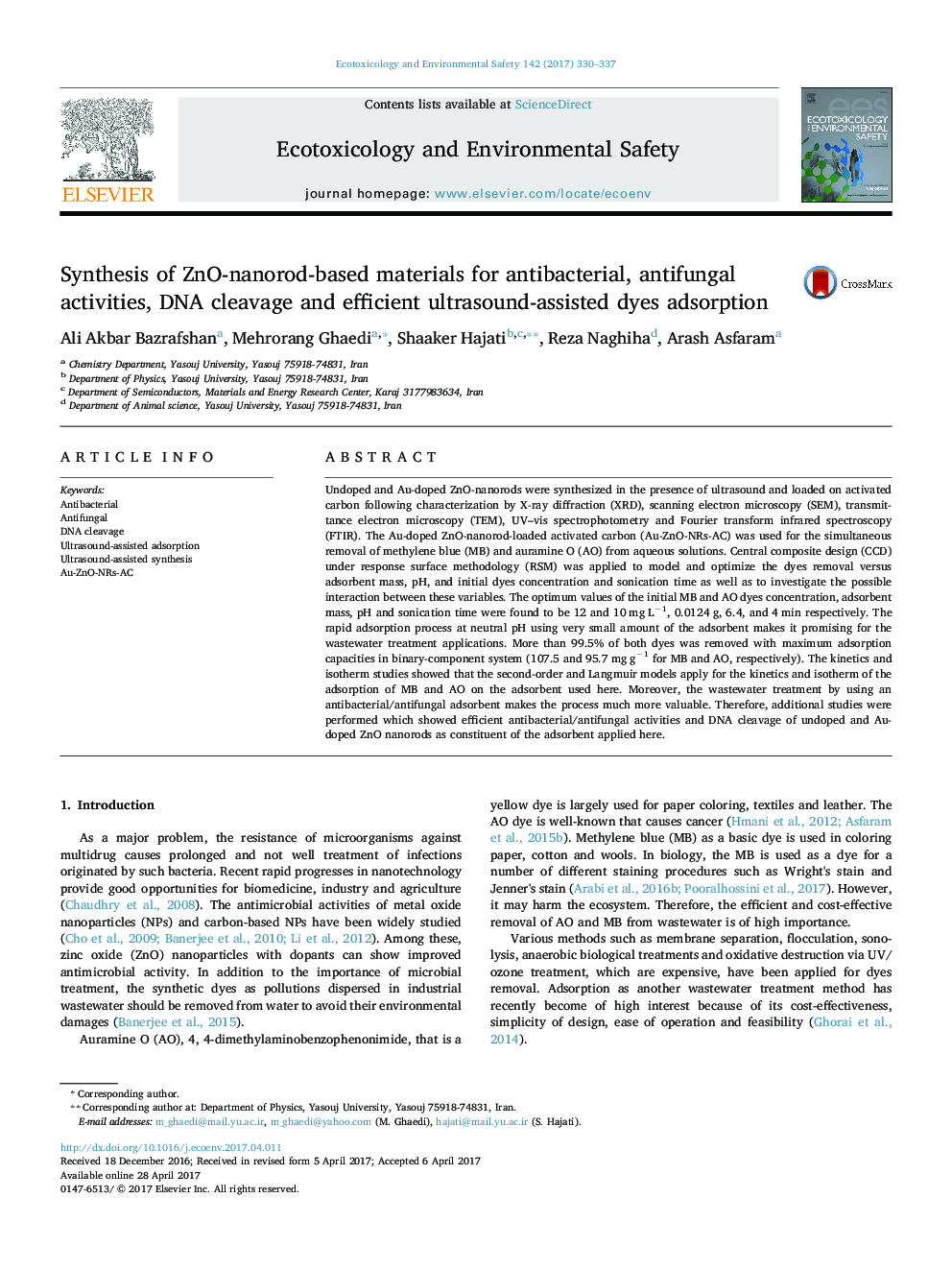| کد مقاله | کد نشریه | سال انتشار | مقاله انگلیسی | نسخه تمام متن |
|---|---|---|---|---|
| 5747649 | 1618922 | 2017 | 8 صفحه PDF | دانلود رایگان |

- Undoped and Au-doped ZnO-nanorods were sonochemically synthesized.
- ZnO: Au-NR-AC as adsorbent was used for ultrasound assisted removal of dyes.
- Significant variables were investigated using the response surface methodology.
- The dyes adsorption data were best followed by Langmuir and pseudo-second order models.
- The as-synthesized ZnO: Au-NR-AC exhibit excellent antibacterial properties, antifungal activities and DNA cleavage.
Undoped and Au-doped ZnO-nanorods were synthesized in the presence of ultrasound and loaded on activated carbon following characterization by X-ray diffraction (XRD), scanning electron microscopy (SEM), transmittance electron microscopy (TEM), UV-vis spectrophotometry and Fourier transform infrared spectroscopy (FTIR). The Au-doped ZnO-nanorod-loaded activated carbon (Au-ZnO-NRs-AC) was used for the simultaneous removal of methylene blue (MB) and auramine O (AO) from aqueous solutions. Central composite design (CCD) under response surface methodology (RSM) was applied to model and optimize the dyes removal versus adsorbent mass, pH, and initial dyes concentration and sonication time as well as to investigate the possible interaction between these variables. The optimum values of the initial MB and AO dyes concentration, adsorbent mass, pH and sonication time were found to be 12 and 10 mg Lâ1, 0.0124 g, 6.4, and 4 min respectively. The rapid adsorption process at neutral pH using very small amount of the adsorbent makes it promising for the wastewater treatment applications. More than 99.5% of both dyes was removed with maximum adsorption capacities in binary-component system (107.5 and 95.7 mg gâ1 for MB and AO, respectively). The kinetics and isotherm studies showed that the second-order and Langmuir models apply for the kinetics and isotherm of the adsorption of MB and AO on the adsorbent used here. Moreover, the wastewater treatment by using an antibacterial/antifungal adsorbent makes the process much more valuable. Therefore, additional studies were performed which showed efficient antibacterial/antifungal activities and DNA cleavage of undoped and Au-doped ZnO nanorods as constituent of the adsorbent applied here.
289
Journal: Ecotoxicology and Environmental Safety - Volume 142, August 2017, Pages 330-337